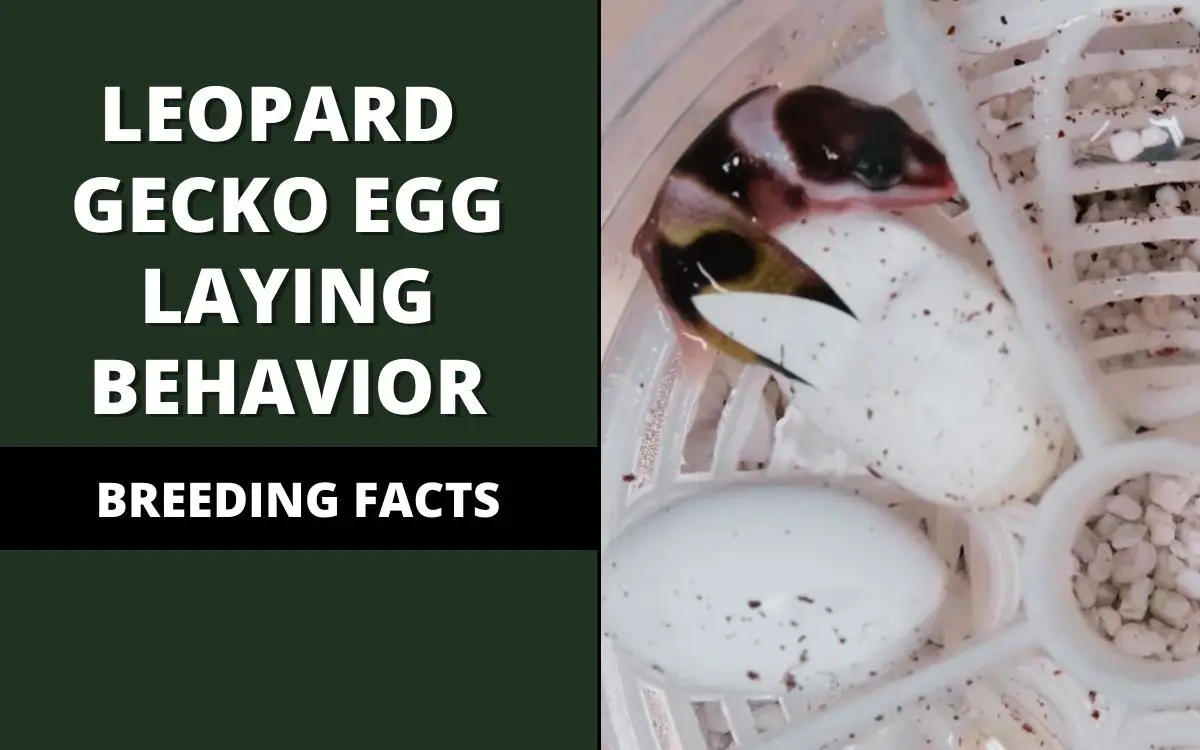Disclaimer: As an Amazon Associate I earn from qualifying purchases. Therefore, we may collect a share of sales from the links on this page, at no extra cost to you!

Leopard geckos are one of the most popular pet reptiles. They require minimal care and are equally friendly. However, leopard geckos are often quiet, so you can’t really tell whether they are experiencing a certain discomfort.
You can learn more about your leopard gecko by studying their behavior. That way, you will be able to ascertain whether your leo is okay or not.
As a pet parent, you need to understand the reproductive behavior of your leopard gecko. This will allow you to provide the best care for your leopard gecko during the breeding season.
Let’s go over everything from leopard gecko egg laying behavior to signs that your leopard gecko is about to lay eggs!
Jump to..
Leopard Gecko Gestation Period
After successfully mating with a male, female leopard geckos can produce eggs after 16 to 22 days. With the right diet, leopard geckos can lay several clutches of eggs during this period. Most leopard geckos lay 1 to 2 eggs at a time.
Adult leopard geckos can lay eggs every 14 to 21 days throughout the breeding season. You should keep in mind that female leopard geckos can lay fertile eggs without mating in a particular season. This is because they can store sperm in their reproductive tract for about 12 months.
If you buy a leopard gecko that has been mated before, you can expect them to lay fertile eggs.
Egg Bound Leopard Gecko
Egg binding refers to a situation in which the eggs take longer than usual to come out of the leopard gecko. It is a serious health complication that requires immediate medical attention.
If you suspect that your leopard gecko is egg bound, you should take them to the vet immediately. The common signs of egg binding in leopard geckos include restlessness and a swollen cloaca.
Signs That Your Leopard Gecko Is About To Lay Eggs
1. Swollen Abdomen
If you notice that your leopard gecko has a swollen abdomen, it could be that they are carrying eggs. You can gently press the leopard gecko’s abdominal area to feel the eggs.
2. Lethargy
Lethargy is a state of inactivity. Leopard geckos that are about to lay eggs often appear worn out. You may also notice that your leopard gecko is moving slower than usual. They will spend most of their time hiding or just sitting around.
3. Visible Eggs
On rare occasions, you’ll be able to see the eggs through the leopard gecko’s thin skin. The eggs are more visible when the leopard gecko is just about to lay them.
4. Behavioral Changes
Leopard geckos engage in a wide range of behaviors when they are about to lay eggs. They may dig around, become aggressive, or hide.
5. Lack of Appetite
Leos may show a lack of interest in food when they are gravid. This is mainly because their stomach becomes smaller due to the developing eggs.
Note: These signs may indicate your leopard gecko has other health complications. As such, you should visit a veterinary doctor to get a clear diagnosis.
Final Verdict
Before breeding your leopard gecko, you should familiarize yourself with their egg laying behavior. This will enable you to provide the leo with the required care.
Gravid leopard geckos should eat a balanced diet. Additionally, water and supplements should be provided regularly.
